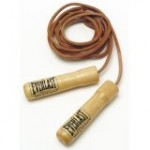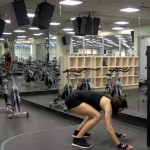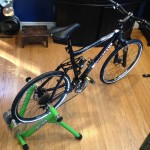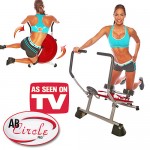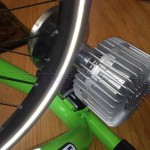Cardio Options During Winter
Its easy to get cardio during the summer but what can you do in the winter when your outdoor options are limited? Most people gain 10-15 pounds of fat during the winter because they eat the same amount of food as they do during the summer but dont get nearly as much exercise. Couple to this the bad food temptations of the holiday season and winter is a bodyfat mine field.
What kind of winter cardio you can do depends on how good of shape you are in and whether their is snow/ice outside.
Cardio At Home During The Winter
Since my whole website is about home workouts, lets start what kind of cardio you can do indoors regardless of how hot or cold it is outside.
-
Jumping rope! If you have never jumped rope before, give it a try before you dismiss it as boring or “too easy”. Its an amazing workout and there are no end to the tricks and variations you can do. Not only is jumping rope good exercise but it helps you work on coordination and balance as well – not many forms of cardio are as good at improving these as jumping rope. There is a reason that boxers and MMA people jump rope. In addition, a jump rope is about as cheap as they get. You do need to be in good shape to jump rope though, if you are way overweight its not the best option.
-
Burpees. Even cheaper than jumping rope. Not only are burpees amazing cardio but they couple cardio with plyometrics and flexibility all in one. You can do burpee intervals for an amazing workout. For starters try 1:1 (30s burpees, 30 seconds rest) for 20 minutes and then move up to 2:1 if you can (60 seconds burpees, 30 seconds rest). Trouble is you need to be in really good shape to do these and they are not recommended for beginners or those significantly overweight.
-
Indoor biking. If you are not in good enough shape to jump rope or do burpees, riding the stationary bike is a good option. Trouble is that most late night infomercial stationary bikes do not provide enough resistance to elevate your heart rate sufficiently. Commercial gym quality stationary bikes cost $800-$2000 and weigh 50-100 pounds. If the bike you are looking to buy is lighter than that or less expensive than that then be wary. Check out the ratings of top exercise bikes from Consumer Reports Magazine. Trouble with all these bikes is that they are expensive, heavy, and take up a lot of room. I dont have room for a stationary bike in our tiny house. A much better option for those who have a bike they use in the summer is a bike trainer. A bike trainer allows you to bicycle indoors. Again, there are a lot of useless ones out there that dont provide enough resistance to elevate your heart rate. Most of these bike trainers provide resistance by one of two methods: magnetic or hydraulic. The magnetic ones allow you to “adjust the resistance”, trouble is, you can change the resistance from very easy to easy. For most people in good shape, these magnetic resistive bike trainers do not offer sufficient rolling resistance to elevate your heart rate adequately. The hydraulic trainers, also called fluid trainers, on the other hand do not have adjustable rolling resistance … but, they virtually mimic real life riding. The slower you go, the easier it is. The faster you go, the harder it is. Regardless of how powerful you are or how out of shape, there is a speed that will work for you. Usually they say which type they are but if not, look at a picture. If the unit has cooling fins on it, then its the hydraulic type that I recommend. If it doesnt have fins or it offers “adjustable resistance” then its the magnetic type that is not recommended. The unit I have that I own and love is the Kurt Kinetic Trainer
. It fits all three of the bikes I own: my road bike, mountain bike, and 29er. Its a well designed, sturdy, and high quality unit.
Winter Cardio Outside The Home (ice and snow)
If you have the option of leaving the home to get cardio during the winter, you have many options but it depends on your physical conditioning.
- Walking at the mall
- Doing stairs in a high-rise building
- Snowshoeing
- Swimming
- Cross Country Sking
Winter Cardio Outside The Home (no ice or snow)
- Walking
- Jogging
- Biking
Useless Indoor Cardio Gadgets
I know that there are going to be a bunch of questions posted asking about various pieces of equipment like the following:
- “Is a mini-trampoline good cardio”
- “Is the Ab Circle Pro good cardio”
- “Is the swing trainer good cardio”
- What muscles are being worked? To elevate your heart rate sufficiently you need to work the BIG muscles in the body, like the legs, or the entire body as you do with burpees. If the “cardio equipment” is exercising your core, arms, or some other minor muscle group then there is no way it will ever allow you to elevate your heart rate sufficiently. Bikes and eleptical machines work because they work the huge legs. Rowing machines work because they work the entire body. The Ab Circle Pro does NOT work because all it does is work the tiny core muscles.
-
Follow the energy! To get cardiovascular exercise your body has to do work. The energy you are expending can leave in one of a few possible ways, as heat, as electricity, or by moving something (like air). Some rowing machines and stationary bicycles use a big fan which is a reliable and simple way to dissipate the energy. Very few pieces of cardio equipment generate electricity so we will skip that one. By far the most common way to provide the necessary resistance for the body is thru friction which then dissipates the energy in the form of heat – WHAT is getting hot?
If there is nothing getting hot then it cant possibly be a good piece of cardio equipment. Many of the late night infomercial devices sold for losing weight are completely useless because they just let your body wiggle, swing, rock, or twist without actually doing anything. Look at the Ab Circle Pro here. What is dissipating the heat? Nothing, therefore it cant possibly be useful as cardio. The expensive stationary equipment at the gym is all sleek and plastic but beneath those covers is a heatsink with fins that dissipates the energy. Look at the photo of the bike trainer above, see the cooling fins? When I use that it gets *very* hot.
Let me give you some general guidelines so you can answer your own question. First, its all about elevating your heart rate. If you already own the piece of equipment in question then try this. Use it for 5-10 minutes then measure your heart rate. If you can get your heart rate above 85% of your maximum, then its a good piece of cardio equipment. Its that simple!
Its pretty easy to tell by looking at a piece of cardio equipment if it will let you elevate your heart rate sufficiently. Here is what to look for:

